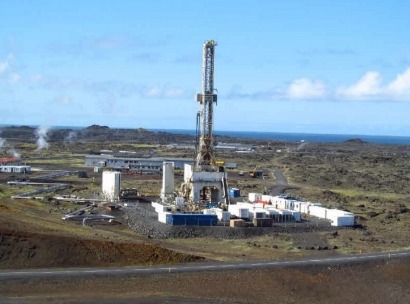
Geothermal energy uses hot liquids stored inside the earth to create steam that turns a turbine to generate electricity. In a standard geothermal well, temperatures may reach 482 degrees Fahrenheit, producing approximately 5 MWs of power, while the temperature of the new well reaches temperatures close to 800 degrees Fahrenheit.
The idea is to generate a more powerful source of clean electricity using the heat of volcanic areas - but the question is whether it can be controlled.
There are risks to drilling into volcanic areas. In addition to magma, which the engineers need to make sure they avoid, volcanic rock contains many faults and cracks, which can cause the drill to get stuck, slowing down the drilling process and increasing the difficulty.
The goal of DEEPEGS is to demonstrate the feasibility of enhanced geothermal systems for delivering energy from renewable resources in Europe. The four year project is led by HS Orka, Iceland, in cooperation with other partners from Iceland, France, Germany, Italy, and Norway.
For additional information:
Deep Enhanced Geothermal System for Sustainable Energy Business

